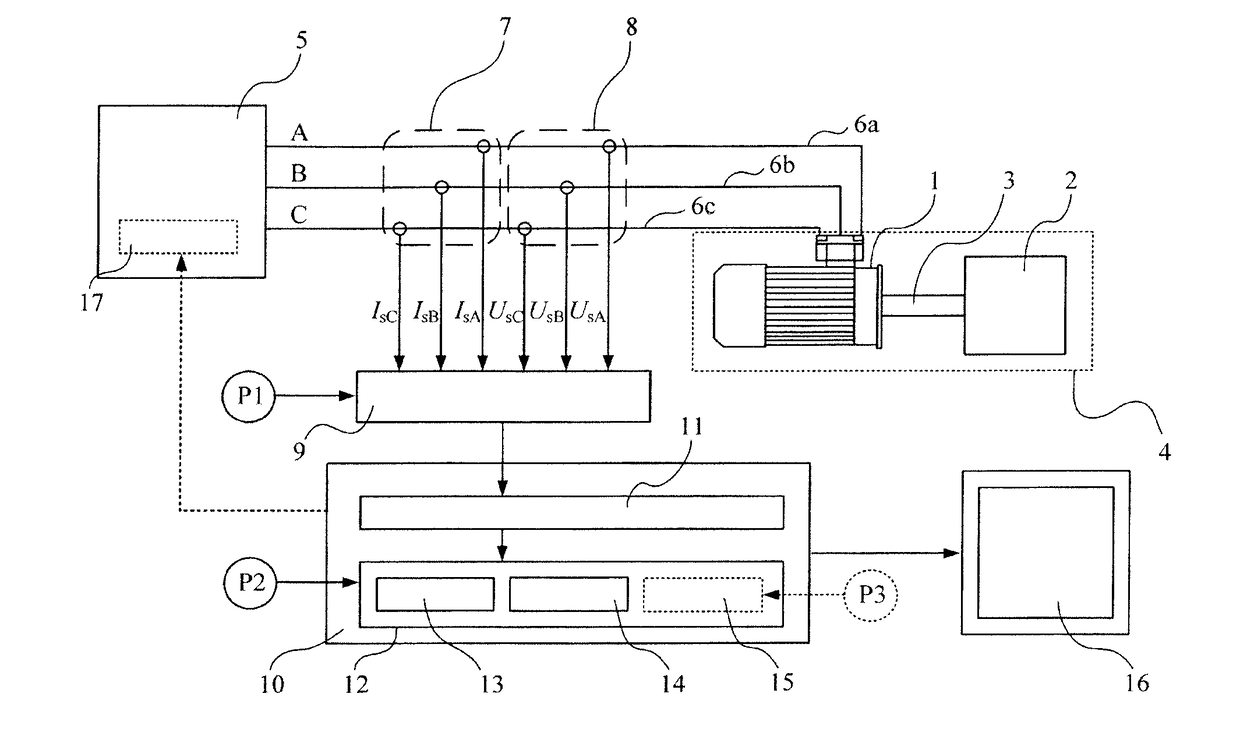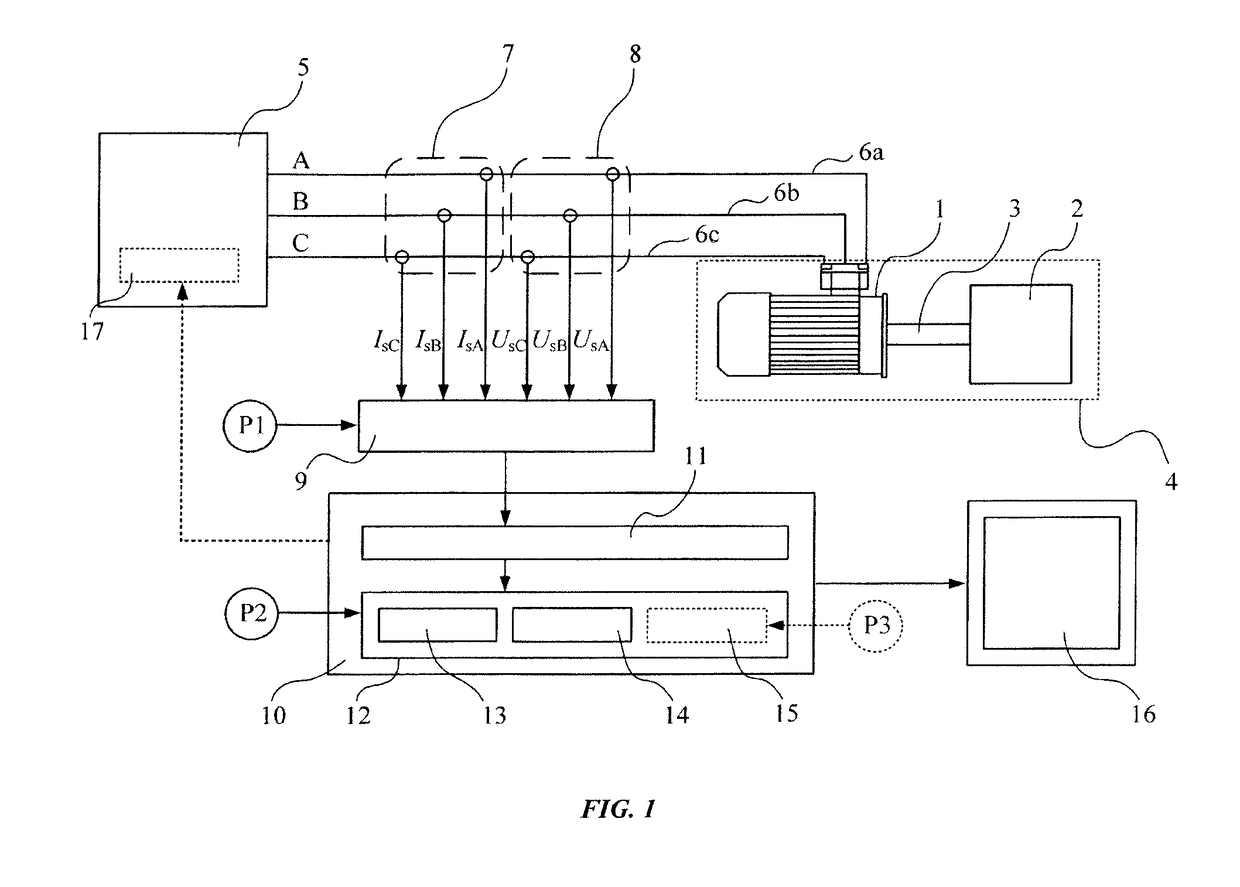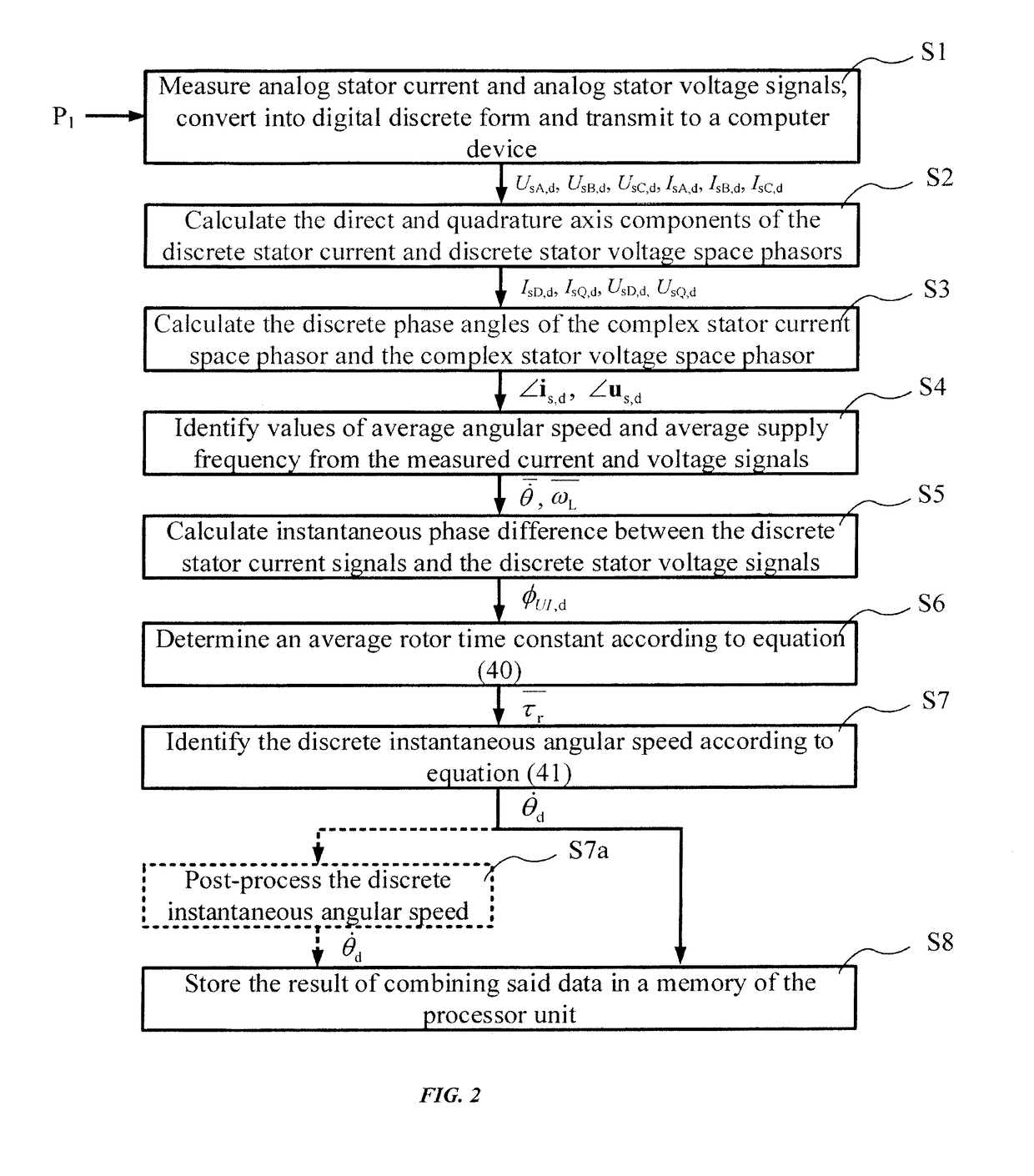Method for identifying the discrete instantaneous angular speed of an electromechanical system
a technology of instantaneous angular speed and electromechanical system, which is applied in the direction of dynamo-electric converter control, dynamo-electric gear control, dynamo-electric brake control, etc., can solve the problems of changes potentially indicating a problem in the machine, difficult installation of sensors, etc., and achieve the effect of minimizing residual errors
- Summary
- Abstract
- Description
- Claims
- Application Information
AI Technical Summary
Benefits of technology
Problems solved by technology
Method used
Image
Examples
Embodiment Construction
[0017]Referring to FIG. 1 there is depicted an example schematic of a physical realization of the invention. A three phase asynchronous electric motor 1 is used to drive a piece of rotating machinery 2 via a shaft coupling 3. The three phase asynchronous electric motor 1, the shaft coupling 3, and the rotating machinery 2, together comprise the electromechanical system 4. The electric power supply device 5 provides three-phase alternating current to the asynchronous electric motor 1 by way of power supply cables 6a, 6b and 6c. One or more outputs of current measuring devices 7, and / or voltage measuring devices 8 are connected with other inputs of the data acquisition unit 9. The data acquisition unit 9, which typically takes the form of an analog-to-digital converter is provided with a set of constant parameters P1, which characterize the process of converting the analog waveforms into the discrete signals, specifically the sampling rate Fs and the length of the signal subjected to ...
PUM
 Login to View More
Login to View More Abstract
Description
Claims
Application Information
 Login to View More
Login to View More - R&D
- Intellectual Property
- Life Sciences
- Materials
- Tech Scout
- Unparalleled Data Quality
- Higher Quality Content
- 60% Fewer Hallucinations
Browse by: Latest US Patents, China's latest patents, Technical Efficacy Thesaurus, Application Domain, Technology Topic, Popular Technical Reports.
© 2025 PatSnap. All rights reserved.Legal|Privacy policy|Modern Slavery Act Transparency Statement|Sitemap|About US| Contact US: help@patsnap.com



